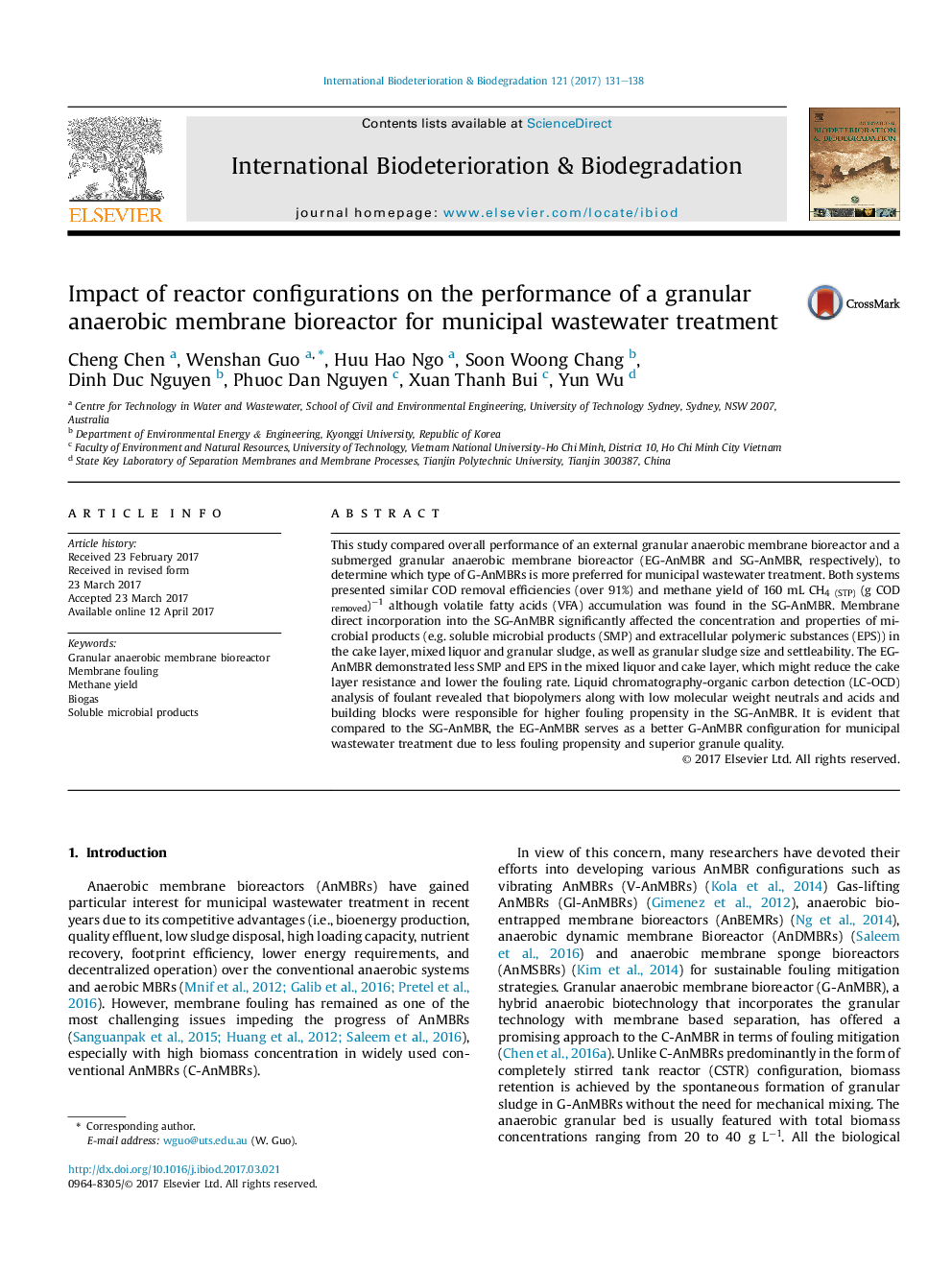| Article ID | Journal | Published Year | Pages | File Type |
|---|---|---|---|---|
| 5740409 | International Biodeterioration & Biodegradation | 2017 | 8 Pages |
â¢SG-AnMBR shows reduction in granules EPS content and deteriorated settleability.â¢More organic matters, particularly biopolymers present in SG-AnMBR foulant.â¢EG-AnMBR is favoured due to the lower fouling rate and prolonged operative time.â¢Two G-AnMBRs show no differences in organic removal and methane yield.
This study compared overall performance of an external granular anaerobic membrane bioreactor and a submerged granular anaerobic membrane bioreactor (EG-AnMBR and SG-AnMBR, respectively), to determine which type of G-AnMBRs is more preferred for municipal wastewater treatment. Both systems presented similar COD removal efficiencies (over 91%) and methane yield of 160Â mL CH4 (STP) (g COD removed)â1 although volatile fatty acids (VFA) accumulation was found in the SG-AnMBR. Membrane direct incorporation into the SG-AnMBR significantly affected the concentration and properties of microbial products (e.g. soluble microbial products (SMP) and extracellular polymeric substances (EPS)) in the cake layer, mixed liquor and granular sludge, as well as granular sludge size and settleability. The EG-AnMBR demonstrated less SMP and EPS in the mixed liquor and cake layer, which might reduce the cake layer resistance and lower the fouling rate. Liquid chromatography-organic carbon detection (LC-OCD) analysis of foulant revealed that biopolymers along with low molecular weight neutrals and acids and building blocks were responsible for higher fouling propensity in the SG-AnMBR. It is evident that compared to the SG-AnMBR, the EG-AnMBR serves as a better G-AnMBR configuration for municipal wastewater treatment due to less fouling propensity and superior granule quality.
Graphical abstractDownload high-res image (169KB)Download full-size image
